Anthopleura artemisia (Pickering in Dana, 1848)Common name(s): Burrowing anemone, Burrowing green anemone, Buried anemone, Moonglow anemone |
|
| Synonyms: | 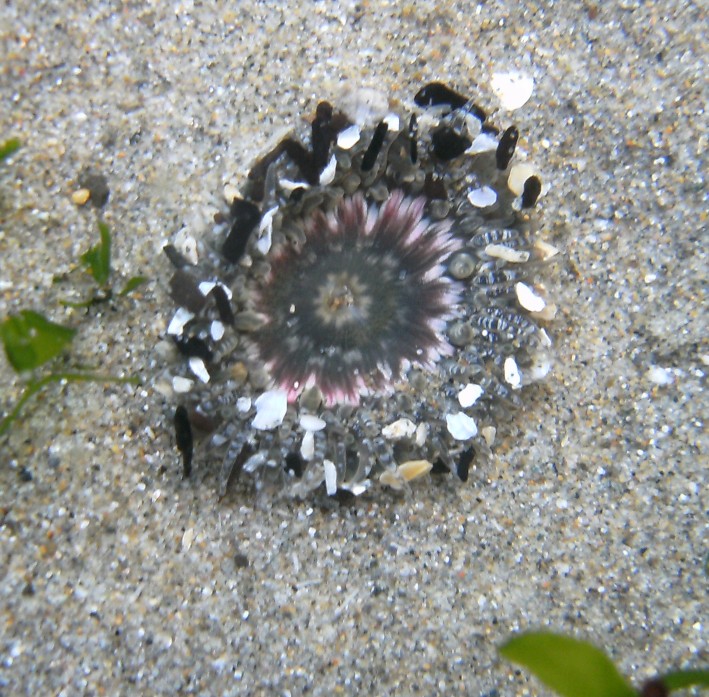 |
| Phylum Cnidaria
Class Anthozoa Subclass Zoantharia Order Actniniaria Family Actiniidae |
|
| Anthopleura artemisia, photographed at Seal Beach, CA in a piddock clam hole. The anemone was mostly covered by sand, as is common for this species. I swirled away the sand before taking this picture. | |
| Photo by: Dave Cowles, Sept 2010 | |
How to Distinguish from Similar Species: Both A. elegantissima and A. xanthogrammica have tubercles and symbionts all the way to the bottom of the column, and live on rock or protrude through only a little sand. Some sources say that A. artemisia does not have symbiotic algae while most individuals of these other species do.
Geographical Range: Alaska to southern California. Very common around Juneau, Alaska.
Depth Range: Low intertidal and subtidal to about 30 meters
Habitat: Open coast and (more often) in protected bays, prefers habitats with rocks or cobble buried in sand.
Biology/Natural
History: Normally
only the tentacles
and oral
disk
are exposed, with the rest of the anemone buried in the
sediment.
This species is capable of greatly elongating. At low tide
the anemone
may withdraw below the surface of the sediment. Sometimes
they live
in holes made by boring clams (see photo above, for example).
Individuals
are solitary as in A. xanthogrammica,
but they can divide asexually by longitudinal fission as in A.
elegantissima. They will attack other
individuals who are
nearby using their special white spherule tentacles.
I find this species much less commonly than the two other
species.
Some references say they contain algal symbionts, but some recent
information
suggests that they do not even though they may sometimes be green in
color.
In British Columbia this species has been observed feeding on spawned
herring
eggs.
Types of cnidae
in A. artemisia:
Spirocysts,
atrichs, basitrichs, and microbasic p-mastigophores.
| Return to: | |||
| Main Page | Alphabetic Index | Systematic Index | Glossary |
References:
Dichotomous Keys:Kozloff 1987, Marine Invertebrates of the Pacific Northwest Anthopleura_artemisia_DLC2020-03s.jpg
Smith and Carlton, 1975. Light's Manual: Intertidal Invertebrates of the Central California Coast
General References:
Morris,
Abbott, and Haderlie, 1980. Intertidal
Invertebrates of California.
Stanford University Press.
O’Clair
and O’Clair, 1998. Southeast Alaska’s Rocky
Shores. Plant
Press.
Flora
and Fairbanks, 1966. The Sound and the Sea
Kozloff,
1993, Seashore Life of the Northern Pacific Coast
Scientific Articles:
Hand, Cadet, 1955. The sea anemones of central
California part
II. The endomyarian and mesomyarian anemones. The
Wasmann Journal
of Biology 13:1 pp. 37-99
General Notes and Observations: Locations, abundances, unusual behaviors, etc.:
This species seems to be much less common than either A. elegantissima or A. xanthogrammica, at least south of Alaska.
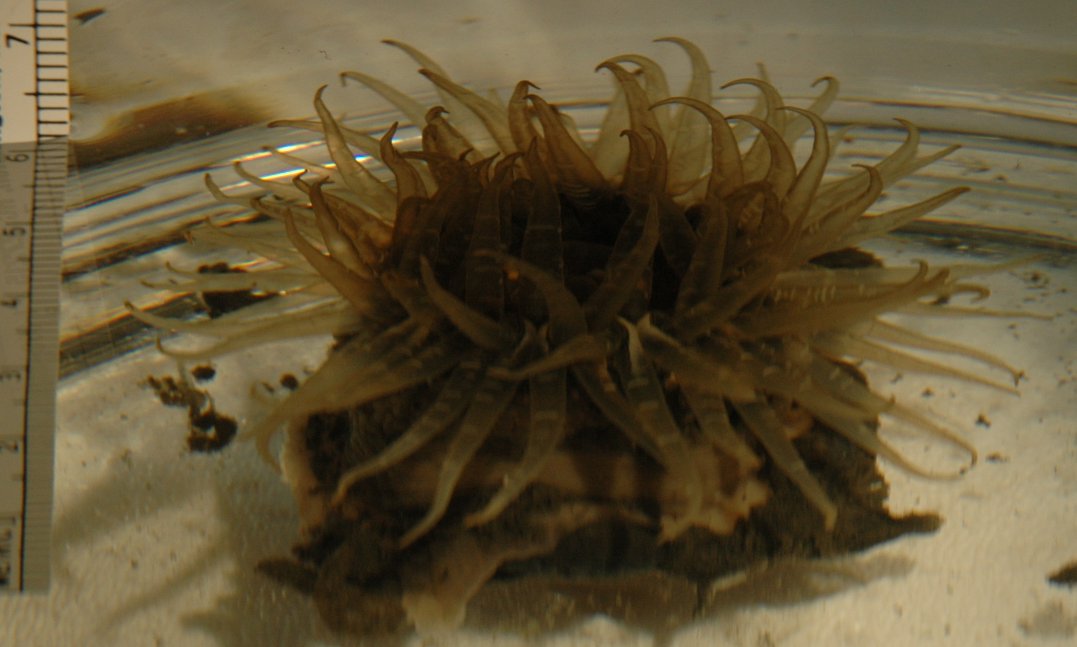
This individual was buried in find sand/mud and attached to a shell
at Guemes Channel near Guemes Ferry, Anacortes, WA. Photo by
Dave
Cowles, July 2005
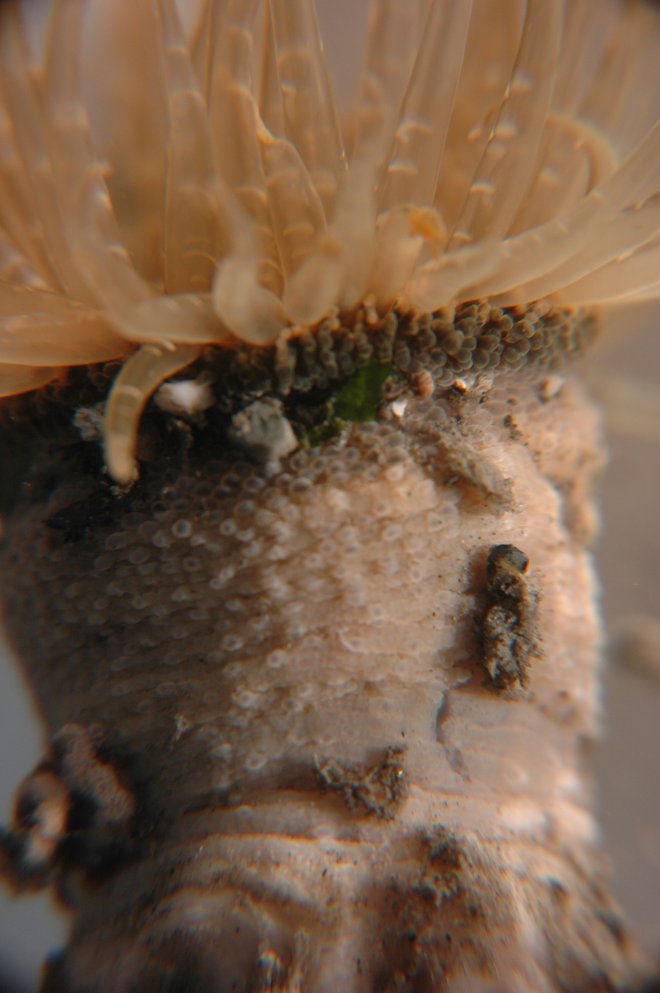
This photo shows the column
and tubercles
of the Guemes Channel individual above.
Photo by Dave Cowles, July 2005
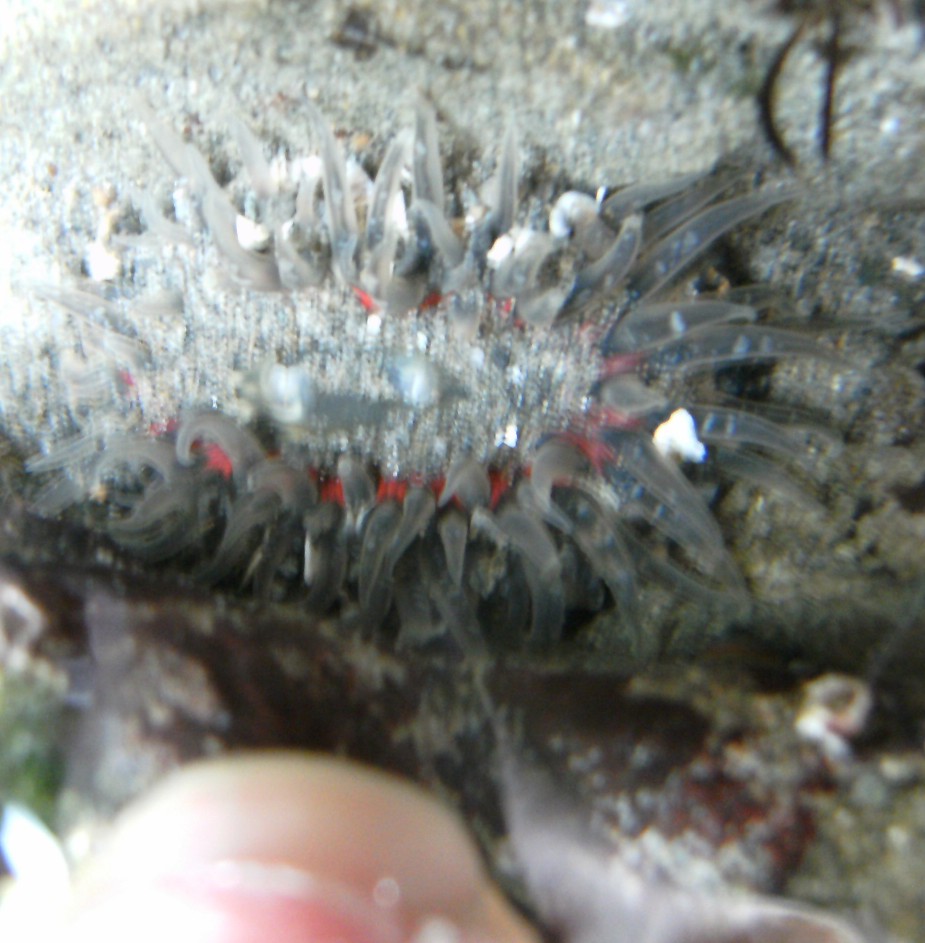
This small individual was photographed in a crevice on a
boulder high
in the intertidal (but subject to frequent wave spray and runoff) on
Beach
#4 near Kalaloch, WA.
Photograph by Dave Cowles. See finger for scale.
| The photos below are of an Anthopleura artemisia anemone about 5 cm diameter found in a low-intertidal salt creek at Penn Cove, July 2020. Photos by Dave Cowles |
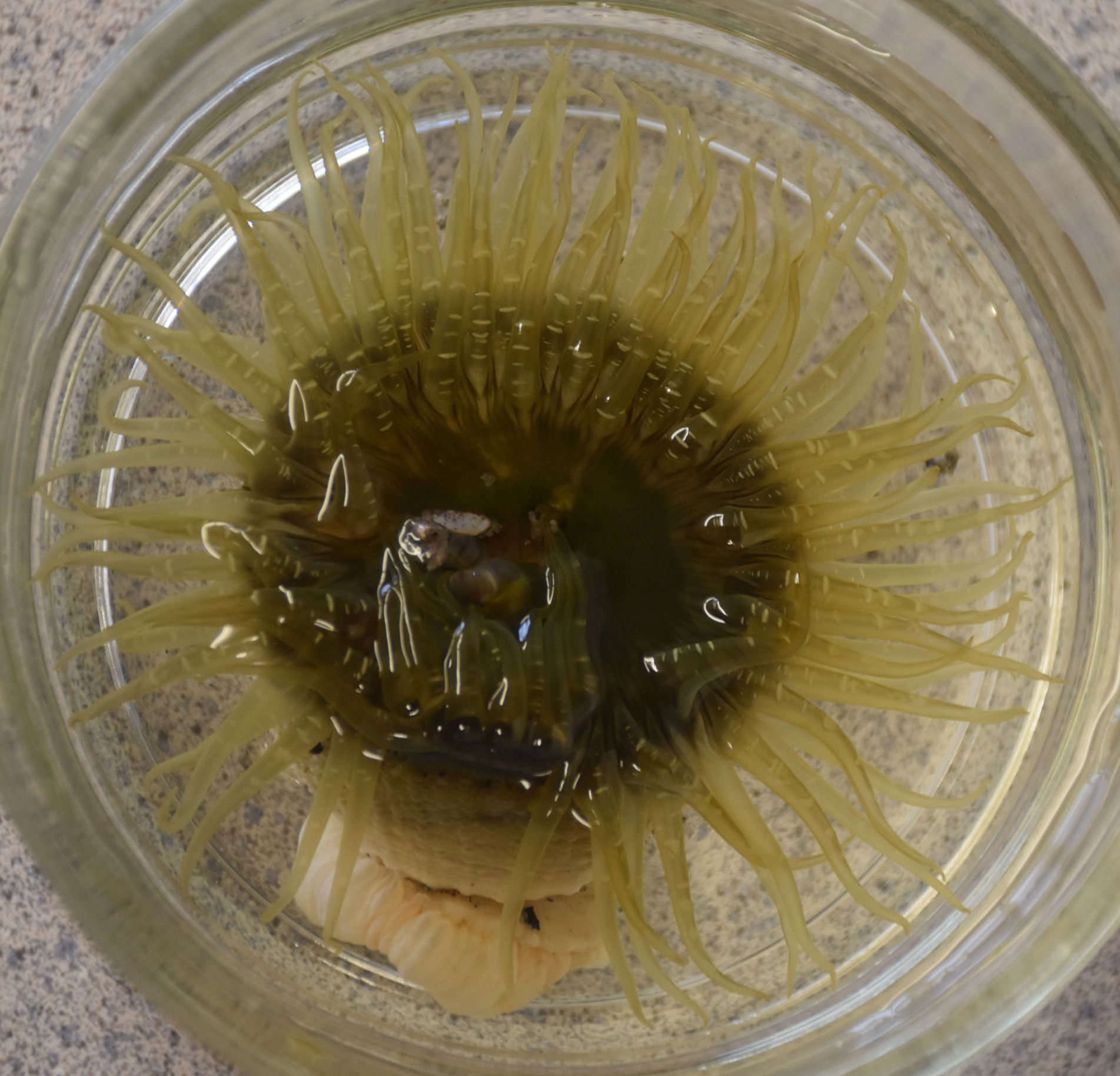 |
| View of the whole individual. This anemone was immersed as a solitary individual in a fast-flowing tidal creek at low tide, attached to a shell fragment nearly 10 cm below the sediment surface with only the oral disk and tentacles protruding. |
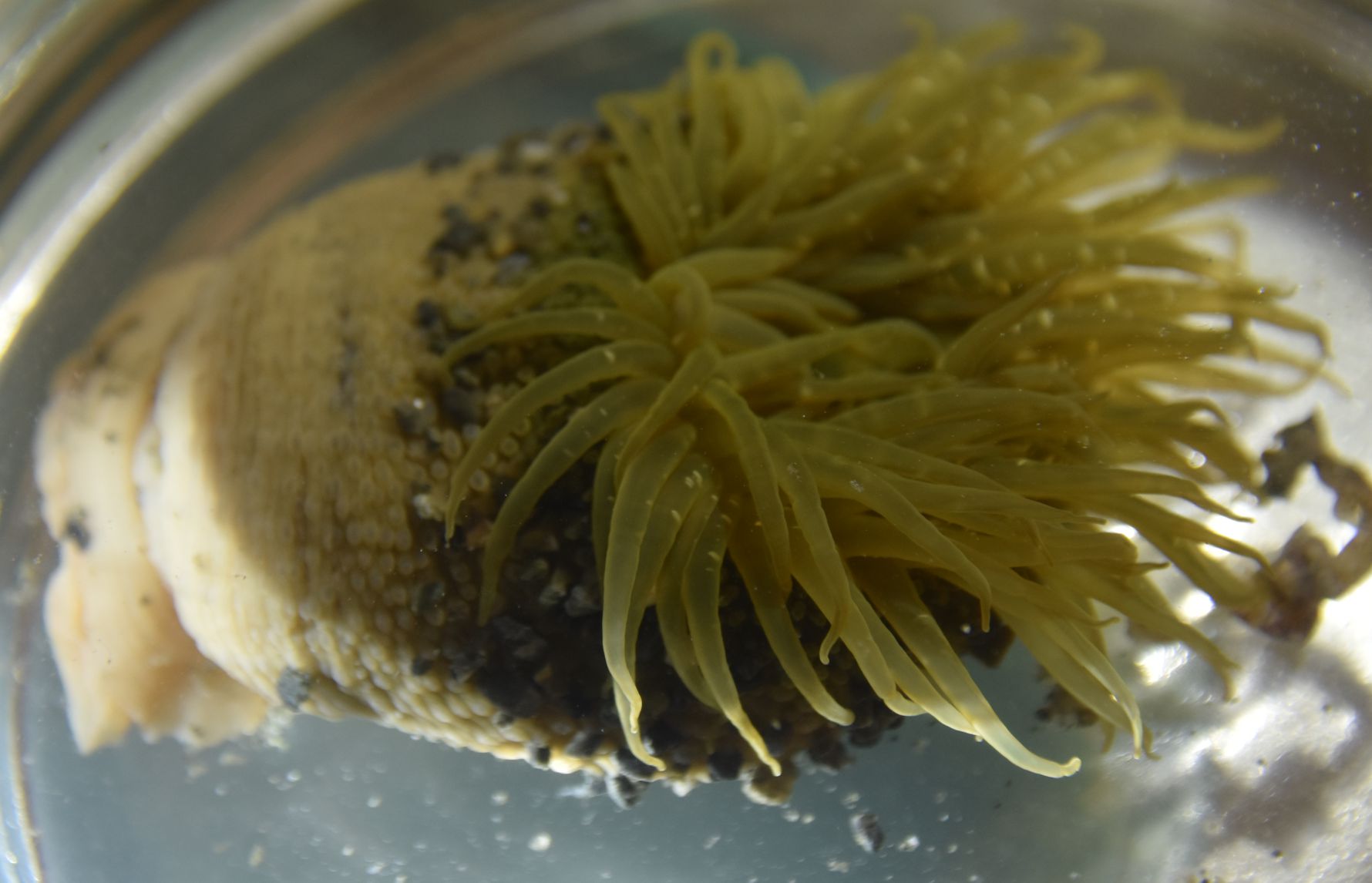 |
| This side view shows the abundant adhesive tubercles on the upper column (holding onto bits of sand and shell fragments) but the lack of tubercles on the lower column wall. |
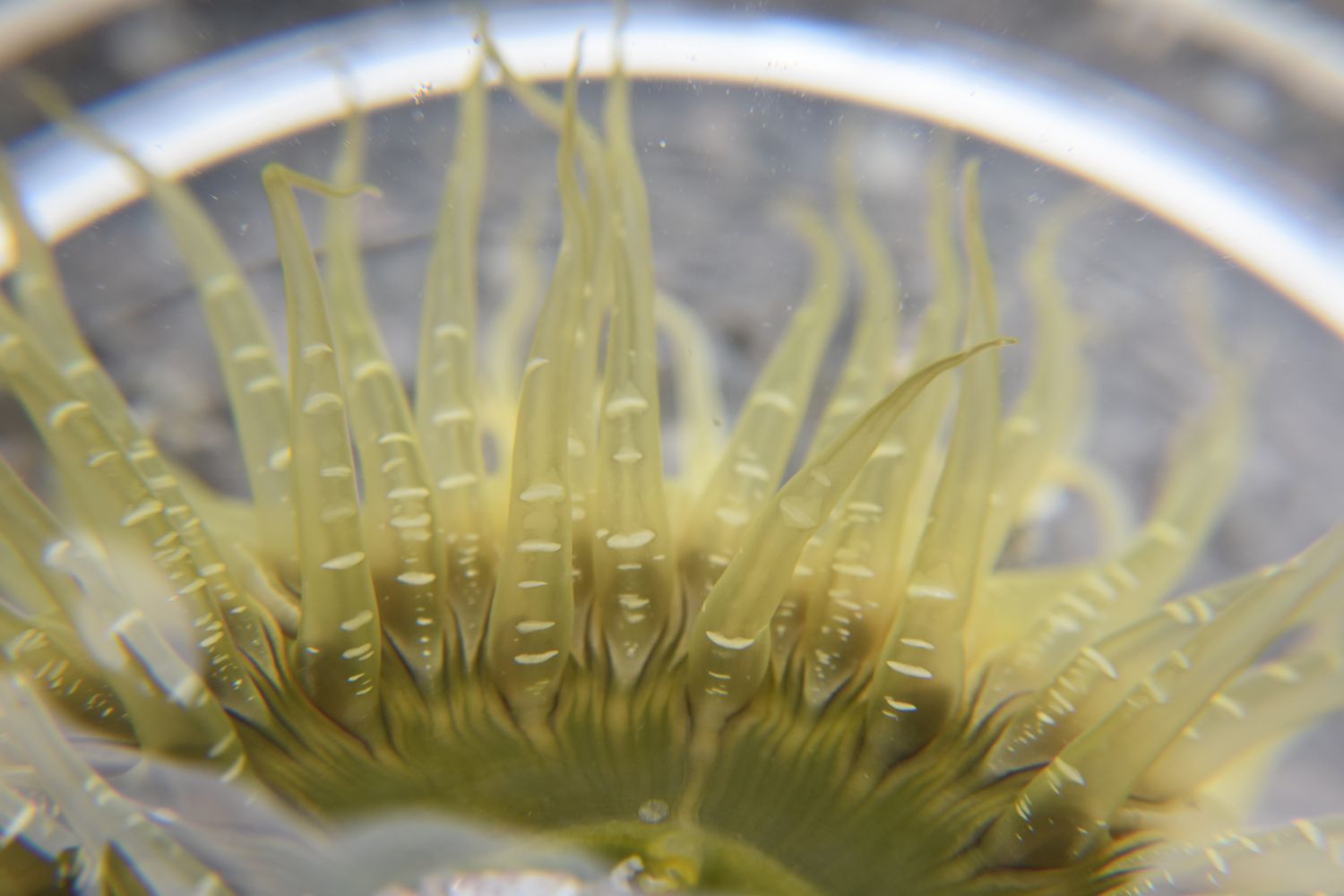 |
| This closeup shows the pattern on the oral disk and tentacles. |
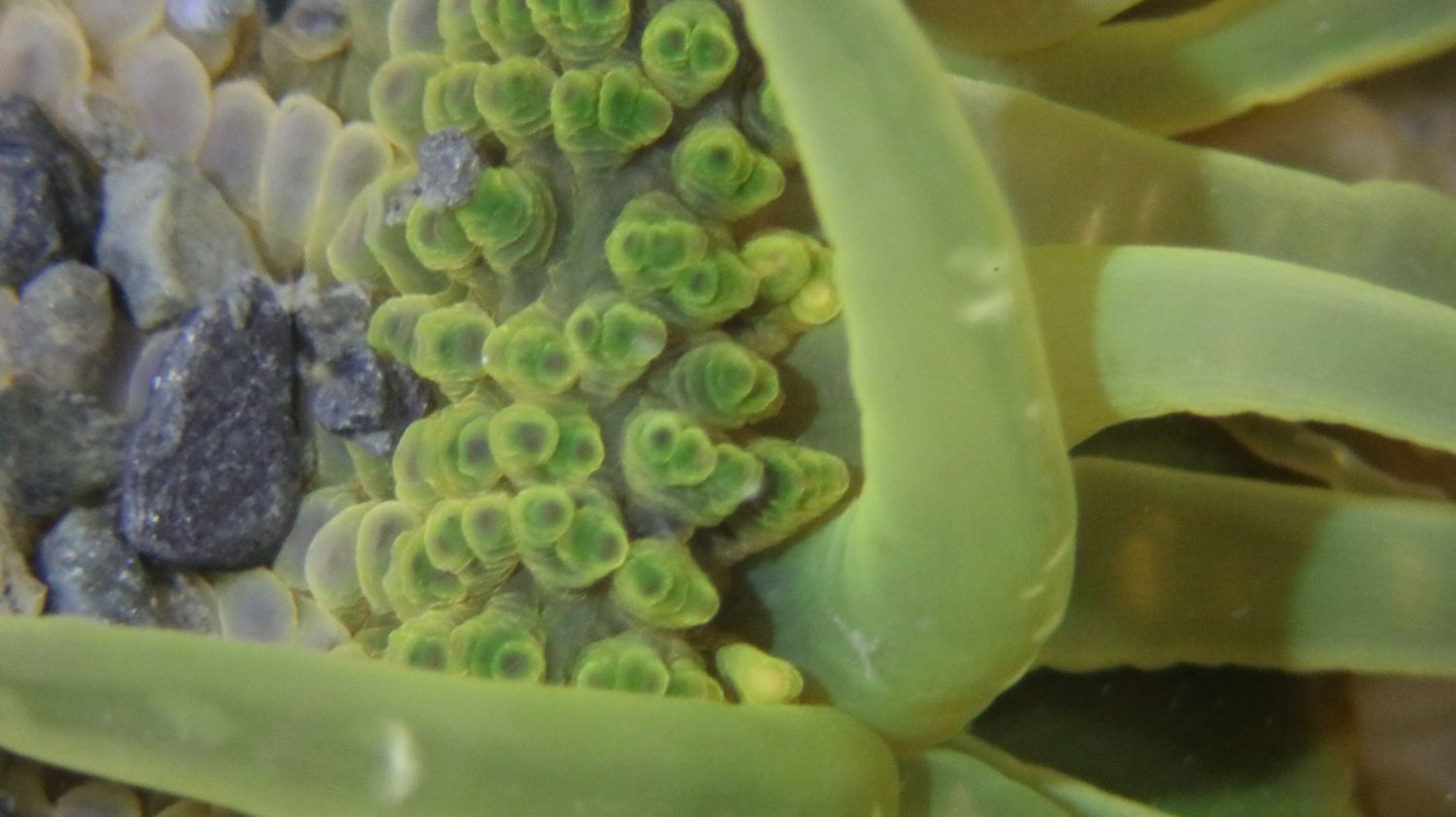 |
| In this closeup of the upper column wall and base of the tentacles, it can be seen that the white spherule-shaped "attack" tentacles sometimes visible here are currently retracted. Notice how the green color of the column and tentacles is much paler than normally seen in A. elegantissima or A. xanthogrammica. Those species are green because of symbiotic algae, while this species has been said to have none so this green would be an animal pigment. |
Authors and Editors of Page:
Dave Cowles, 2004, 2005